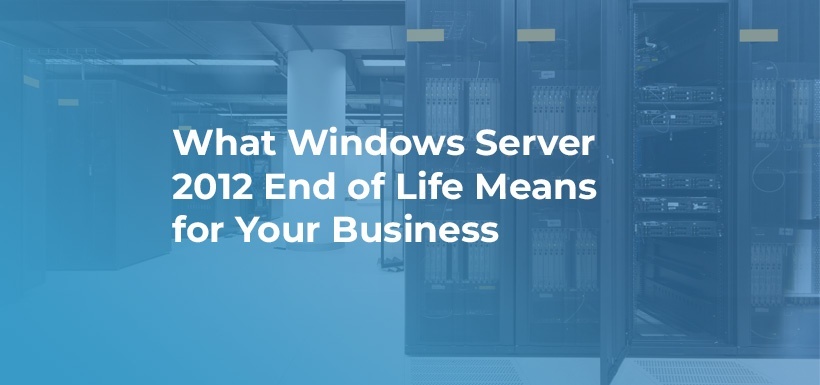What Windows Server 2012 End of Life Means for Your Business

Ikram Massabini
November 6, 2023

As of October 10, 2023, the end of support for Windows Server 2012 and Windows Server 2012 R2 concluded. This milestone marks the cessation of security updates, bug fixes, technical support and online technical content updates for these operating systems. For organizations actively using these servers, the implications are significant.
Strategic planning is essential to mitigate risks and ensure compliance.
Here are 4 business implications of using Windows Server 2012
#1: Compliance Concerns
Maintaining compliance with industry regulations, such as PCI, HIPAA and others, may require all applications and infrastructure to remain supported by the vendor. Running unsupported technology post-end of life could instantly render your organization non-compliant leading to increased exposure to security attacks and potentially higher cyber insurance premiums.
#2: Costly Downtime
With the end of support, organizations lose the safety net of vendor-provided support in the event of issues or security threats. The absence of reliable updates can leave organizations vulnerable to prolonged disruptions and delays which would impact productivity and operational efficiency.
#3: Target for Cyber Criminals
Outdated technology presents an attractive target for malicious actors. By delaying the server upgrade, you are increasing the risk of falling victim to targeted attacks. A data breach can lead to potential revenue loss, damage to reputation and possible fines.
#4: Missed Opportunities for Innovation
Sticking to older server versions means missing out on the latest enhancements and features offered by newer versions. By keeping the organization up-to-date, it allows for improved service delivery and a better user experience.
What Should You Do Next?
Organizations need to strategize their next steps for migrating away from Server 2012.
Assess Your Needs
Organizations must identify their specific needs to formulate a viable migration plan. There are two primary options – replacing the server or going to the cloud.
Upgrading
For organizations with complex on-premises environments, upgrading to a newer version of Windows Server might be the preferred option. This approach allows for better control over the infrastructure and provides the opportunity to take advantage of new features while ensuring compliance.
The Cloud
Migrating to the cloud offers numerous advantages, including scalability, cost optimization and reduced hardware management burden. By leveraging cloud services, businesses can modernize their infrastructure, benefit from robust security measures and stay current with the latest updates automatically.
Keep in mind budgetary limitations, available skills and the complexity of the migration process.
Develop a Plan
Creating a well-thought-out strategic plan is crucial to managing the migration effectively. Organizations must determine what needs to be migrated or upgraded and how each decision impacts the overall environment.
Enlist an Expert
Engaging a third-party professional service provider to conduct an assessment of the existing environment can provide valuable insights. The assessment will highlight vulnerabilities and provide recommendations for a successful migration.
End of life for Windows Server 2012 presents significant challenges for businesses still currently using it. To navigate this transition successfully, you must act promptly, create a strategic plan and seek assistance from an industry expert. By taking proactive steps now, you will safeguard your operations from costly downtime and cyber attacks.
At MVP Network Consulting, we understand the criticality of Windows Server 2012 end of life for your business. As a trusted partner in IT infrastructure and cloud solutions, we offer a free risk assessment to help you identify vulnerabilities and devise a migration plan tailored to your specific needs. Contact us today to secure your organization’s future and make a seamless transition into the modern IT landscape.
